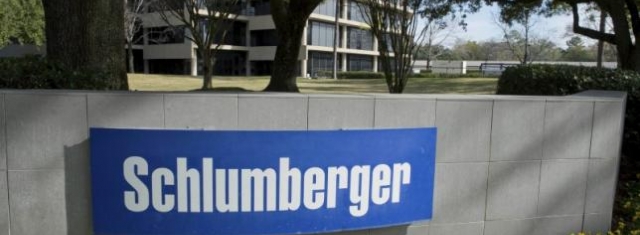News
In oil rout, some U.S. energy bosses were spared the pain.
U.S. energy.

U.S. energy bosses. (Source: Reuters/Richard Carson/Files)
Some oil and gas companies are making it easier for their top managers to meet performance goals or are offering more cash as a prolonged oil slump keeps share prices at lows not seen in five years, filings show.
Among the beneficiaries are bosses of both solid performers and struggling companies, and the changes may rankle investors facing losses.
Oilfield services company Schlumberger NV, for example, used lower earnings targets for the second half of 2015, which helped its CEO Paal Kibsgaard receive total pay of $18.3 million, only slightly below the 2014 level. The company's shares fell 18 percent last year, about half the decline of its index and have since recovered about 7 percent.
Linn Energy , meanwhile, whose shares nosedived 87 percent last year under the weight of its swelling debt and dwindling financing options, announced a new incentive plan last month for its top executives that focuses more on cash rather than stock. Dallas-based oil and gas exploration company Exco Resources Inc will offer its directors restricted stock worth $140,000 a year ““ about 10 times the value of shares awarded in 2014, according to securities filings, even though its shares fell 43 percent last year.
In another example, Halcon Resources Corp - built by its CEO Floyd Wilson, who has made a fortune launching and selling off oil companies - disclosed in a securities filing last week that Wilson received $3 million and three other top executives $800,000 each in exchange for an agreement to stay for at least another year.
A representative for Halcon, which has hired financial and legal advisors to navigate the downturn, did not return messages.
Schlumberger declined to comment beyond its recent proxy statement. An Exco representative said the new plan makes its director pay more competitive and aligns their compensation with performance of the company.
A representative for Linn Energy told Reuters in February the compensation changes were designed to ensure management stayed on to secure the company's future. The company did not respond to requests for further comment. Offering executives financial incentives to stay through upheaval, be it a merger or restructuring, is a common practice.
ONE WAY BET?
But whatever the merits, frequent changes in incentives “can absolutely undercut the relationship between pay and performance,“ said Ken Bertsch, head of the Council of Institutional Investors, whose members include big pension funds and asset managers.
Anne Simpson, who oversees corporate governance at the $279.5 billion California Public Employees' Retirement System, told Reuters that it planned to take a hard look at pay adjustments in coming months when proxy votes are due.
"Performance is not a one way bet, paying off on the way up, and never going down," she said in an e-mailed response.
A Reuters analysis of filings through mid-March showed that a number of companies changed their payout plans for leaders in ways that shielded them from the collapse in oil prices, even as they continued to slash other spending and lay off thousands of workers. Since November 2014 Schlumberger alone has laid off 34,000 people, or about a quarter of its workforce.
Most companies, however, paid their top executives less in 2015 to reflect falling profits and share prices amid crude's more than 60 percent fall since mid-2014, compensation consultants said. (Graphic: tmsnrt.rs/1Pa5AFT)
"A lot of wealth has come off the table for senior executives in the span of 18 months," said Mike Halloran, senior partner at consulting firm Mercer.
Halloran estimates 2015 executive pay at large energy firms fell by a fifth on average. That compares with a 24 percent drop in the energy sector index
For example, John Lindsay, CEO of contract driller Helmerich & Payne Inc. saw his total pay drop by nearly a quarter to $3.7 million for the 12 months ended Sept. 30 after the company skipped bonus payments for top executives citing missed performance targets.
Exxon Mobil Corp, the largest energy company, has yet to release all details on compensation paid to its CEO Rex Tillerson. However, his total $33.1 million package in 2014 included $21.4 million in 225,000 shares granted on Nov. 25, 2014 and although he received the same number of shares last November, they were worth $3.1 million less.
Many publicly-traded energy companies will detail their 2015 pay, including annual bonuses, in proxy filings beginning this month and those that bucked the trend are likely to face particular scrutiny.
Schlumberger's 2015 compensation for its CEO Kibsgaard included an incentive payment of $3.3 million. It rose from $2.9 million in 2014 after the company used lower earnings targets for the second half of the year, citing in its recent proxy "the continued challenges of the industry."
That payment would be roughly unchanged had Schlumberger used the same targets for the whole year, estimated Chris Crawford, president of compensation consultant Longnecker & Associates.
At the Houston-based Linn Energy, which warned on March 15 it might have to file for bankruptcy, CEO Mark Ellis is now eligible for cash payments of up to $6.9 million this year. In 2014, when Ellis made $10 million, about the average of recent years, $7.6 million of that was in stock.
For its part, Exco, which has hired Credit Suisse as its restructuring advisor to help lighten its debt load, boosted the stock award for its non-employee directors.
Exco representative Chris Peracchi said the move aimed to make directors' pay more competitive and was not meant to shield them against the downturn since shares could still lose value.
John Groton, director of equity research at Thrivent Asset Management, which has investments in energy companies though not in Exco, questioned the move's rationale. Among other things, he said, the slump has made it easier to find talented people to serve on boards.
Exco's new plan, Groton said, was "just egregious."
(Reporting by Ross Kerber in Boston and Michael Erman in New York; Editing by Carmel Crimmins and Tomasz Janowski)
more information: https://http://www.reuters.com/article/us-usa-energy-pay-idUSKCN0WP0CB
Liability for this article lies with the author, who also holds the copyright. Editorial content from USPA may be quoted on other websites as long as the quote comprises no more than 5% of the entire text, is marked as such and the source is named (via hyperlink).









